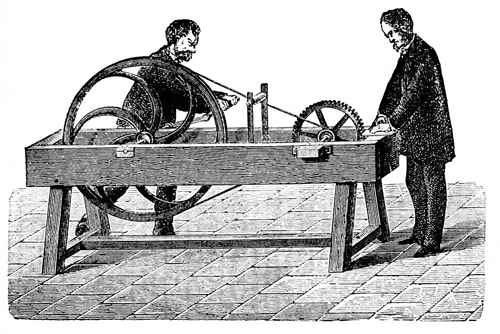watchnerd
Grand Contributor
Well, this is definitely something unusual:
"The Gadget is a signal processor that “dynamically re-tunes the concert pitch of music from an assumed A=440Hz to C=256Hz” but – crucially – without altering the tempo.
According to product designer, Schiit’s Number 2 Mike Moffat, music’s tuning pitch has slowly crept upwards over time. The Gadget corrects for this drift with digital signal processing (DSP). Changes can be applied in real time with the twist of a knob with users finding their own unique “aah” point – one where, according to Moffat, music will sound more fluid and more immersive.

The magic box’s input and output socketry – 1 x USB in, 1 x coaxial in, 1 x coaxial out – points to the digital heart within: a SHARC processor. The Gadget sits between streamer/PC/Mac and DAC and even with no turning applied, it could serve as an affordable USB-S/PDIF converter or S/PDIF re-clocker.
With some retuning dialled in, a defeat switch enables instant A/B comparisons both at home and, stepping outside of the norm once more, also at audio shows like RMAF.
According to Schiit’s press release, the Gadget will sell for somewhere in the region of US$200. And absence of product photos suggests that this year’s RMAF demo will utilise a prototype with availability remaining TBC."
http://www.digitalaudioreview.net/2017/10/rmaf-2017-taking-a-neat-schiit-on-a-naim/
Corrects for the drift?
Drift since when?
And how would we know this?
Philosophically, this is a big step beyond EQ/room correction.
"The Gadget is a signal processor that “dynamically re-tunes the concert pitch of music from an assumed A=440Hz to C=256Hz” but – crucially – without altering the tempo.
According to product designer, Schiit’s Number 2 Mike Moffat, music’s tuning pitch has slowly crept upwards over time. The Gadget corrects for this drift with digital signal processing (DSP). Changes can be applied in real time with the twist of a knob with users finding their own unique “aah” point – one where, according to Moffat, music will sound more fluid and more immersive.

The magic box’s input and output socketry – 1 x USB in, 1 x coaxial in, 1 x coaxial out – points to the digital heart within: a SHARC processor. The Gadget sits between streamer/PC/Mac and DAC and even with no turning applied, it could serve as an affordable USB-S/PDIF converter or S/PDIF re-clocker.
With some retuning dialled in, a defeat switch enables instant A/B comparisons both at home and, stepping outside of the norm once more, also at audio shows like RMAF.
According to Schiit’s press release, the Gadget will sell for somewhere in the region of US$200. And absence of product photos suggests that this year’s RMAF demo will utilise a prototype with availability remaining TBC."
http://www.digitalaudioreview.net/2017/10/rmaf-2017-taking-a-neat-schiit-on-a-naim/
Corrects for the drift?
Drift since when?
And how would we know this?
Philosophically, this is a big step beyond EQ/room correction.


